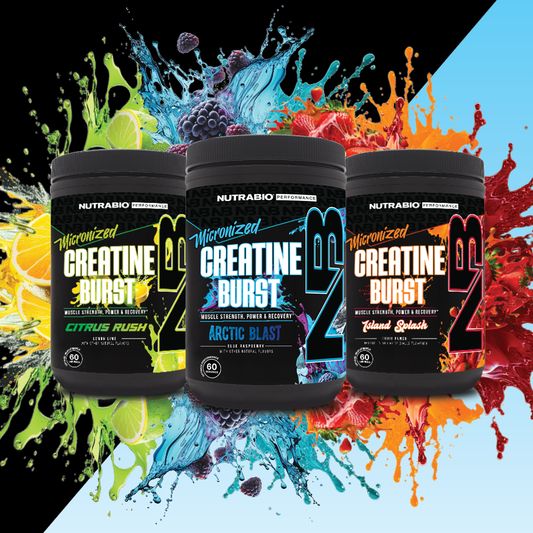For decades citrulline malate has been used by the gym crowd to produce massive pumps and epic gains. It’s no wonder that this popular supplement is found in almost every pre-workout on the market today. While getting big and strong is great, we’re endurance athletes and we’re more interested in knowing if citrulline malate can help us run farther, push harder, and give us an extra edge over our competition. In this article we will discuss what citrulline malate is, what benefits it can provide to endurance athletes, proper dosage and timing, and if it is safe.
Fast Facts On Citrulline Malate
- Citrulline Malate is simply L-Citrulline that is combined with malic acid. Combining these two compounds makes citrulline malate more bioavailable when ingested.
- L-Citrulline by itself is one of the 20 amino acids. It is found naturally in foods like watermelon, legumes, and nuts.
- L-Citrulline is converted to arginine after ingestion. This makes it more effective at increasing arginine levels in the body than arginine itself.
- As an ergogenic aid citrulline malate supplementation has been demonstrated to reduce fatigue and improve aerobic and anaerobic performance during extended exercise.
- The proper dose of citrulline malate is 6-8 grams taken 30-60 minutes before endurance exercise.
- As a whole citrulline malate is a very safe supplement. No research has demonstrated any adverse side -effects when the proper dose in consumed.
What Is Citrulline Malate?
Citrulline is one of the three amino acids (arginine and ornithine are the other two) that plays a role in the urea cycle. A process that converts ammonia to urea for excretion. Citrulline is found naturally in foods like watermelon, legumes, and nuts. As a supplement, citrulline is commonly combined with malic acid (molecule used in the Krebs cycle) to improve absorption in the body. When citrulline malate is ingested is it converted to arginine, a potent nitric oxide booster. For that reason, citrulline malate has many benefits as it relates to health and endurance performance.
Citrulline Malate For Health
Citrulline malate may have some unique application for general health. For example, citrulline malate may help with erectile disfunction. Citrulline malate increases nitric oxide in the body which in turn leads to the expanding on blood vessels…. or vasodilation. This relaxing and expanding of blood vessels can alleviate ED caused by high blood pressure
What Is The Proper Dose Of Citrulline Malate For Health?
1,000mg of citrulline malate should be taken three times a day with meals for a total of 3,000mg daily to enhance circulatory health and help alleviate ED.
Citrulline Malate For Endurance Performance
Research has demonstrated that citrulline malate can improve both aerobic and anaerobic performance during prolonged endurance exercise. It does this by reducing fatigue, increasing nitric oxide in the body, enhancing blood flow to working muscles, boosting work capacity, and possibly increasing muscle ATP.
What Is The Proper Dose Of Citrulline Malate For Performance?
6-8 grams of citrulline malate ingested 30-60 minutes prior to endurance exercise.
Research On Citrulline Malate And Athletic Performance
Citrulline Improves Nitric Oxide And Blood Flow In Middle Aged Men
A 2012 study conducted by Ochiaia et al. discovered that ~6000mg of citrulline taking daily for 7 days was able to improve blood flow that was correlated with increases in arginine. Remember, citrulline is converted to arginine when ingested.
Citrulline Malate Enhances Anaerobic Performance
A 2010 study conducted by Perez et al. found that who consumed 8 grams of citrulline malate prior to a weight lifting protocol were able to delay fatigue, perform more reps per set, and reduce muscle soreness.
Citrulline Malate Decreases Fatigue
A 2006 study conducted by Hickner et al. found that subjects who consumed 6 grams of citrulline malate 60 minutes prior to a treadmill test, were able to improve time to exhaustion.
Citrulline Malate May Increase Muscle Oxygenation
Subjects who consumed 6 grams of citrulline malate for 22 days had an increase in creatine phosphate re-synthesis and reported less fatigue during endurance exercise.
Citrulline Malate Increases Time Trial Performance
A 2016 study conducted by Takashi et al. discovered subjects who consumed 2.4 grams of citrulline malate daily for 7 days were able to reduce time to completion by 1.5% during a 4km cycling time trial.
Citrulline Malate Increases Muscular ATP Efficiency
In a rodent study, Giannesino et al. discovered that citrulline malate had a performance enhancing effect associated with an improvement in muscular contraction efficiency.
Citrulline Malate Can Enhance The Use Of Amino Acids For Fuel During Exercise
A 2010 study conducted by Sureda et al. found that trained cyclists who consumed 6 grams of citrulline malate prior to a 137km cycling test were better able to utilize amino acids (BCAAs in particular) for energy when blood glucose/glycogen was low.
What Is The Proper Ratio Of Citrulline To Malate?
The majority of research examining the benefits of Citrulline Malate have used a 2:1 ratio. At a 6-gram total dose this would be 4 grams of citrulline and 2 grams of malic acid.
Is Citrulline Malate Safe?
Citrulline appears to be well tolerated by most humans. No research has demonstrated any adverse effects from citrulline malate supplementation.
The Bottom Line On Citrulline Malate
Based on the available research, citrulline malate appears to be an effective supplement that provides a multitude of health and performance benefits. 6-8 grams of citrulline malate taken 30-60 minutes prior to exercise can improve aerobic and anaerobic performance, increase ATP synthesis, boost nitric oxide levels in the body, and support greater blood flow to working muscles.


